It's time for the weekly nature identification thread! Post pictures of plants, animals, rocks, or other cool stuff that you've photographed but can't identify, and I, along with anyone else who would like to help, will try and help you identify it. I'll be making some changes to it- most notably, I'll be using the SBD proceeds from this post to give out @steembasicincome memberships to people who post stuff to be identified or help me identify photos.
Buteo jamaicensis, better known as the Red-tailed Hawk. The red-tailed hawk is one of the most common raptors found in North America, and can be found from the Caribbean to Alaska. They mostly survive off of rodents, but aren't picky eaters- they'll eat lizards, crabs, fish, and other birds as well if need be. Thanks to how common and easily trainable they are, they're the preferred bird for novice falconers in North America. Like most other raptor species, the females are larger than the males. [Image source]
Remember: The most important information you can give along with any photo to be identified is its geographical location. This narrows down the range of possibilities more than any other info you can provide.
Plants:
Along with the photo, add where you found it, the time of year, the approximate altitude, and any interesting scents or textures not caught in the photo.
Animals:
Along with the photo, add the location you found it, the time of year, the sounds it made, any interesting behaviors, and any other features not caught well in the photo.
Rocks:
Along with the photo, add the location you found it, a description of the terrain it was found in, whether it was attached to a rock outcrop or found loose on the ground or buried in the soil, a description of its texture (especially its grain size), and a description of its weight and density. Fossils are included in this category. (Despite my greatest expertise lying here, rocks tend to be some of the hardest things to identify in a photo.)
Fungi:
I will not be identifying mushrooms and fungi for foraging purposes. Mushrooms should really only be identified for foraging purposes in person and by an expert. If another contributor wishes to identify them, that's their call, but I encourage them to be similarly cautious. I might also try to identify a few fungi that are clearly not being looked at for the purposes of eating, but that'll be a case by case decision.
@artofwisdom, @roxy-cat, & @snowyknight all earned @steembasicincome memberships for submitting to the last nature identification thread or helping identify submissions. Congratulations!
This butterfly landet on my girlfriends hand and stayed there a few minutes...
This picture was taken in croatia this year.
Downvoting a post can decrease pending rewards and make it less visible. Common reasons:
Submit
Melitaea aurelia or Melitaea britomartis.
Downvoting a post can decrease pending rewards and make it less visible. Common reasons:
Submit
i just moved from NY about an hour north in the Hudson valley for school...and there’s a fruit tree in my backyard. I have no idea what it is and i’d very much like to know !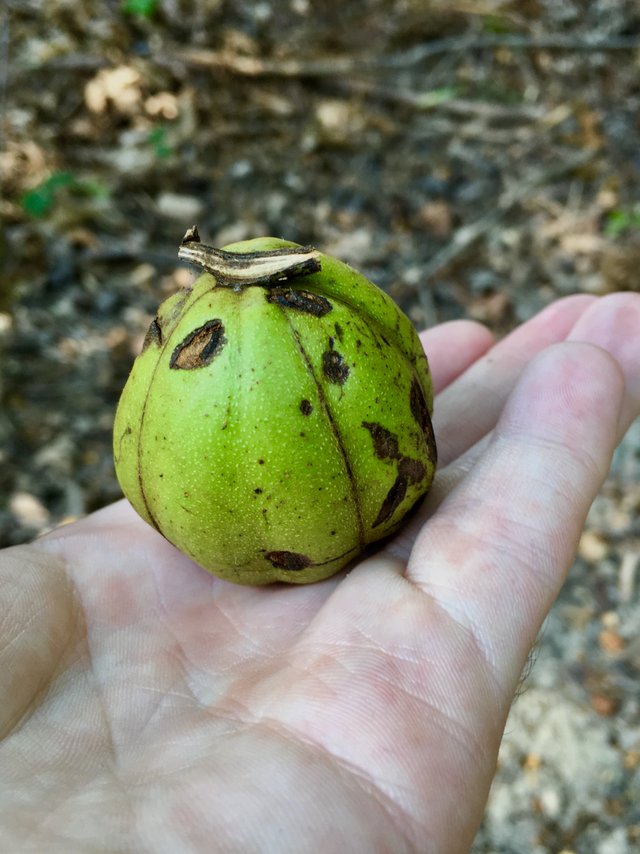
Downvoting a post can decrease pending rewards and make it less visible. Common reasons:
Submit
I keep having conversations with people where I'm like, "there's an identification thread on Steemit!!" ...because they want to identify a mystery plant or something. Of course, sometimes I want to say that to non-Steemians, but hey...
Anyway, resteeming so hopefully more people see it, because it's such a great idea!!
Downvoting a post can decrease pending rewards and make it less visible. Common reasons:
Submit
Good on you for resteeming it @phoenixwren! I'm following you now!
Downvoting a post can decrease pending rewards and make it less visible. Common reasons:
Submit
Thanks!
Posted using Partiko Android
Downvoting a post can decrease pending rewards and make it less visible. Common reasons:
Submit
I am going to photograph many animals and plants that I do not know, I like initiative, I also love nature.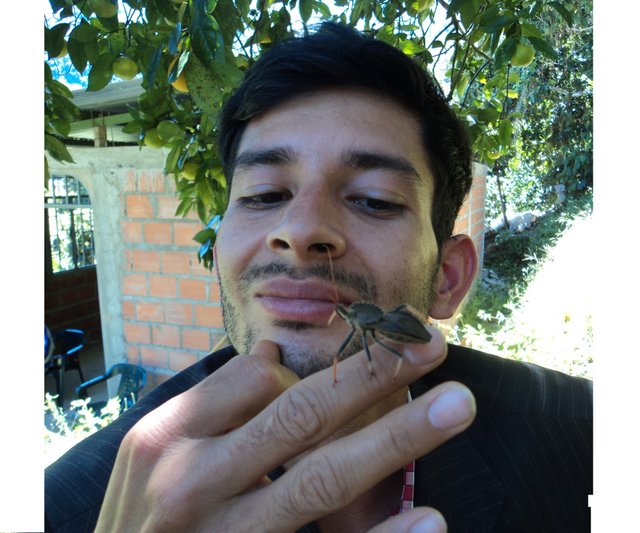
For example, this animal that has in my hand I do not know how to call, nor its species do not swim over it.
Downvoting a post can decrease pending rewards and make it less visible. Common reasons:
Submit
Looks like a "wheel bug"...
The wheel bug (Arilus cristatus) is in the family Reduviidae (literally, "hangnail"), - from wiki.
Where in the world was this @thelastpoet?
Downvoting a post can decrease pending rewards and make it less visible. Common reasons:
Submit
As for handling it, the same wiki states:
''Although evidence suggests that wheel bugs can seemingly be domesticated in controlled environments, if provoked or mishandled, they may attack in an act of defense. As a cautionary warning, the bite of a wheel bug is generally considered to be of greater severity in terms of the level and duration of pain than the sting of common insects like wasps. The resulting wound is documented to be extremely painful, lasting, and lingering, accompanied by an unceasing numbness which can persist for days. ''
Downvoting a post can decrease pending rewards and make it less visible. Common reasons:
Submit
Amazing! I know some of them are called "assassin bugs"! Which sounds dangerous too!
Downvoting a post can decrease pending rewards and make it less visible. Common reasons:
Submit
Found another interesting critter! Did I post this one already? I hope not...
This one was found on the window of my nucleo community house at Damanhur. It was a super hot day in northern Italy (between Turin and Milan) and he was hanging out. My friend thinks it is Barbitistes, but can't decide if it is Barbitistes serricauda or Barbitistes obtusus. I tried to look them up, but there is not much information. Wikipedia puts the common name at Southern Saw-tailed Bush-cricket or Alpine Saw Bush-cricket. We are definitely at the foot of the Alps, so that would make sense.
What do you think?
Downvoting a post can decrease pending rewards and make it less visible. Common reasons:
Submit
Such a beautiful critter. I would go with Barbitistes obtusus. And it looks like you photographed a handsome male. 🙂
https://en.m.wikipedia.org/wiki/Barbitistes_obtusus
Downvoting a post can decrease pending rewards and make it less visible. Common reasons:
Submit
I think so, too, only that the Wikipedia for Barbitistes serricauda also has similar pictures. I tried to find a website that would show me the two side-by-side, but no luck. There are so many insects in the world that it is hard to get a good description without diving into scientific papers.
Downvoting a post can decrease pending rewards and make it less visible. Common reasons:
Submit
Indeed, most of the photos found on web seem to be of the same specie. However, I found a german website (http://www.orthoptera.ch/arten/item/barbitistes-obtusus) where the Barbitistes crickets are very detailed presented. Not the photos but the information. Reading the articles, I really believe we have a Barbitistes obtusus. Serricauda is kind of hard to find so close to civilization.
Downvoting a post can decrease pending rewards and make it less visible. Common reasons:
Submit
This is why it is always important to check in all the languages you can! I often check websites in three or four languages when I am doing research. Thanks for the reminder!
Downvoting a post can decrease pending rewards and make it less visible. Common reasons:
Submit
This was growing in a garden in southern Wisconsin, USA in the autumn. There was no identification and I have always wondered what it is.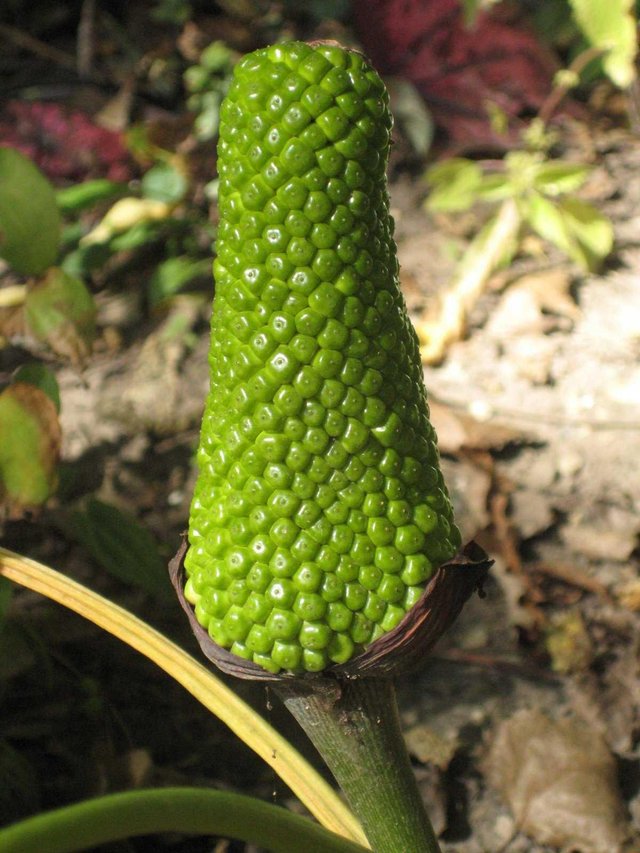
Downvoting a post can decrease pending rewards and make it less visible. Common reasons:
Submit
Good afternoon @melinda010100 , happy to see you again!
Good afternoon @moutainwashere! Good afternoon, everybody!
I am not sure and I am not that good with guessing plants, but this could be possible close to Cynomorium Songaricum ... I love Cynomorium which is a most surprising healing herb. Maybe a very young one ... but very unusual for this area I think ...
Honestly ... not sure if it is, but I thought I give it a try.
http://www.runfnatural.com/herbal-extract/men-health-herbal-extract/cynomorium-extract.html
Have a beautiful day Melinda :)
Downvoting a post can decrease pending rewards and make it less visible. Common reasons:
Submit
Looks like Monstera deliciosa's fruit, but probably isn't.
Downvoting a post can decrease pending rewards and make it less visible. Common reasons:
Submit
Thank you, @mountainwashere. This is a very interesting initiative and I'm glad to participate. 🙂
Downvoting a post can decrease pending rewards and make it less visible. Common reasons:
Submit
Congratulations @mountainwashere! You have completed the following achievement on the Steem blockchain and have been rewarded with new badge(s) :
Click on the badge to view your Board of Honor.
If you no longer want to receive notifications, reply to this comment with the word
STOPDo not miss the last post from @steemitboard:
Downvoting a post can decrease pending rewards and make it less visible. Common reasons:
Submit
I took this picture on Thursday, in Alaska, overcast kind of day, It was a pretty good sized spider/not-spider
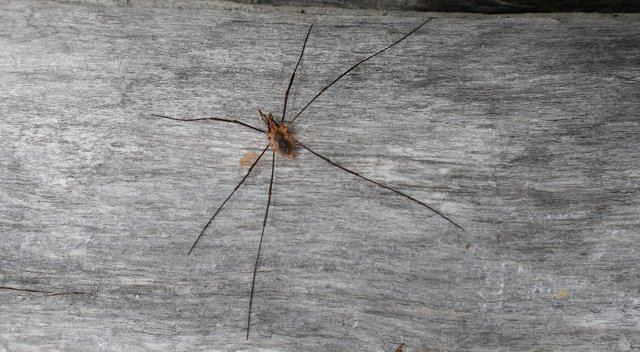
Wiki says all spiders have 8 legs, this one only six legs but they also said the front two could be adapted like mandibles. The legs on the right are longer than the ones on the left, I don't know if it is because of injury or not. From the tip of middle right leg to tip of middle left leg I would estimate 2 1/2 to 3 inches. In my post I jokingly said maybe it is a mamma longlegs since female spiders tend to be bigger than their male counter parts. Am I pretty close to being right or just a common garden spider missing a couple of legs?
Downvoting a post can decrease pending rewards and make it less visible. Common reasons:
Submit
It is Phalangium opilio (male) , on the picture on the closer look 2 front legs are folded i guess so 8 legs altogether.
( 9 legs on this one? )
Downvoting a post can decrease pending rewards and make it less visible. Common reasons:
Submit
Cool, thank you for that information, I have only recently taken a fascination with bugs and small things because of my camera, they make good subjects to take pictures of.
Downvoting a post can decrease pending rewards and make it less visible. Common reasons:
Submit
Phalangium opilio
Phalangium opilio is "the most widespread species of harvestman in the world", occurring natively in Europe, and much of Asia. The species has been introduced to North America, North Africa and New Zealand. It is found in a wide range of habitats, including meadows, bogs, forests, and various types of anthropogenic habitats, such as gardens, fields, hedgerows, lawns, quarries, green places in built-up areas, walls and bridges.
Downvoting a post can decrease pending rewards and make it less visible. Common reasons:
Submit
https://steemit.com/contest/@tecnosgirl/show-me-a-snap-winner-is-balticbadger-mystery-creature-first-person-who-can-prove-what-it-is-wins
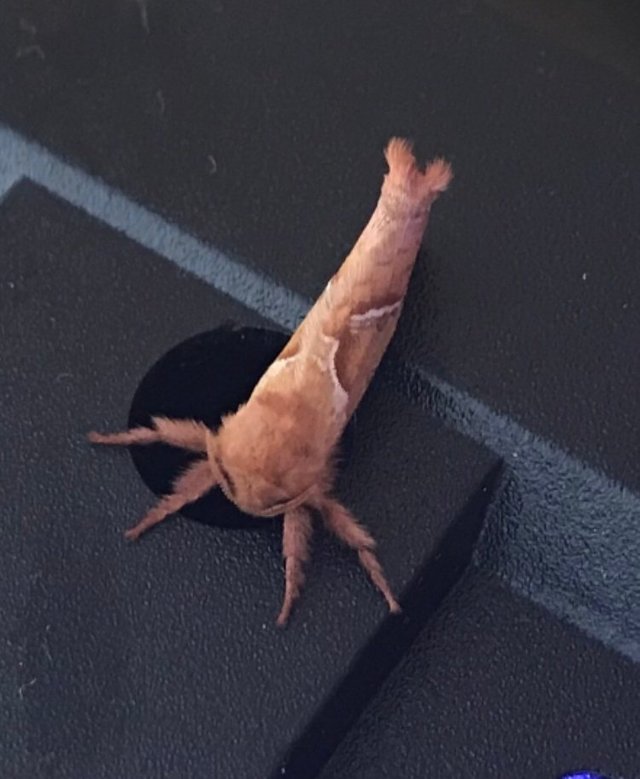
Downvoting a post can decrease pending rewards and make it less visible. Common reasons:
Submit
I would say this is a Lasiocampa moth. Given the area, Lasiocampa quercus.
Regarding the proof...I couldn't find a photo where the moth has the same position. 🙂
Downvoting a post can decrease pending rewards and make it less visible. Common reasons:
Submit
I forgot to mention in the op that the person who took this photo said there was no wings on this creature, and he had no clue what it was, cause that was the first thought.
Downvoting a post can decrease pending rewards and make it less visible. Common reasons:
Submit
I did some extra research. There are some moths species where the females are wingless. I replied to your post with the details I found. 🙂
Downvoting a post can decrease pending rewards and make it less visible. Common reasons:
Submit
Poland, forest, June:
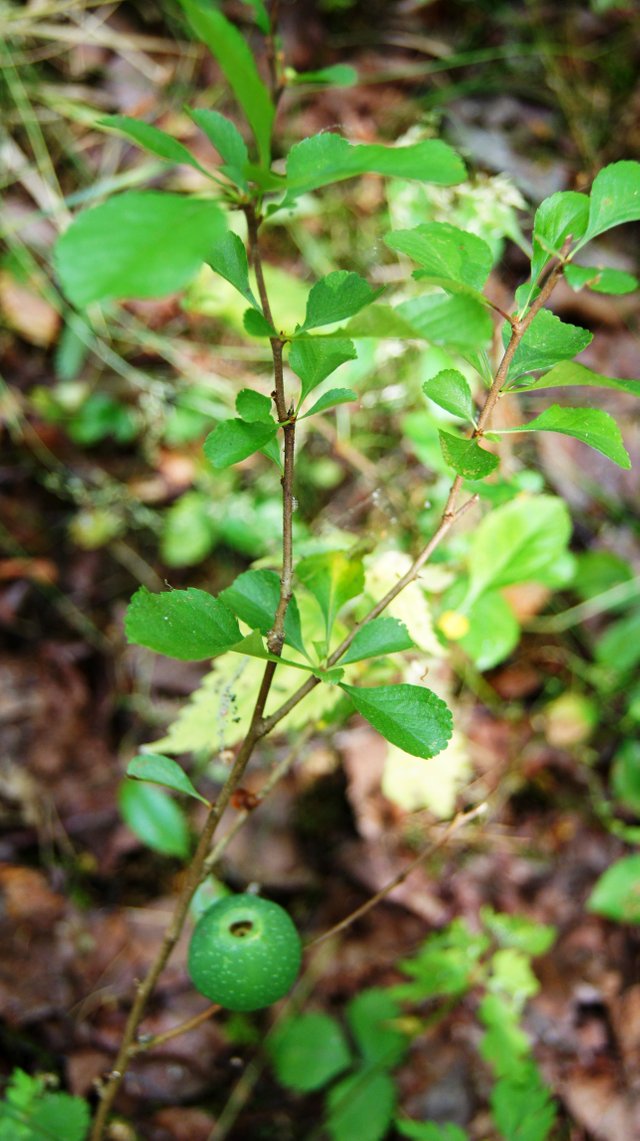
Downvoting a post can decrease pending rewards and make it less visible. Common reasons:
Submit
Hard to believe but seems to be a shrub of the genus Chaenomeles...
Downvoting a post can decrease pending rewards and make it less visible. Common reasons:
Submit
Could be so, even if i wouldn't expect that species growing in the wilderness of the polish (mainly pine) forest.
Downvoting a post can decrease pending rewards and make it less visible. Common reasons:
Submit
According to https://www.researchgate.net/publication/319665331_Chaenomeles_-_health_promoting_benefits
some species can be found in Poland.
I'm not a 100% sure but this is my guess also: Chaenomeles. Which one...hard to say without a flower or a ripe fruit.
Downvoting a post can decrease pending rewards and make it less visible. Common reasons:
Submit